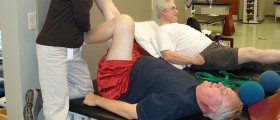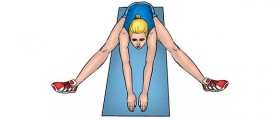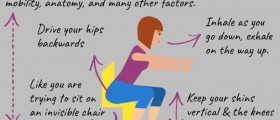
Facts about Cysts
Cysts are lumps which can grow on or in our body for many different reasons. Humans can develop cysts in every possible part of our body, which means that they cannot only form inside the body, but also outside. Cysts may contain fluids, be created due to skin cell anomalies, infections and many other different causes. Tumors may be behind the formation of cysts as well. As far as cysts possibly appearing on our legs, they usually form on our knee area or along the bones. These cysts are painful since our legs carry a significant amount of our weight, which applies pressure that increases the amount of discomfort we experience from cysts. Finally, cysts may vary in size and shape, as well as in pain level and in the complications that can go hand-in-hand with them. Thus, some cysts are more dangerous and life-threatening than others, which may be totally benign.
Cysts Appearing on your Leg: What Now?
The first kind of leg cyst is referred to as the Baker's cyst. This anomaly takes place due to leakage of fluids from the knee, in the area behind it. This leakage happens due to cartilage damage or tearing, damage that then leads to the formation of the cyst which, in the long run, may trigger numerous problems and symptoms. Some of these are osteoarthritis, blood clots, or even muscle damage. These cysts cause pain, stiffness, and often interfere with the patient's ability to flex their leg.
Apart from being behind the knee or around the knee area, cysts may be formed in the bone marrow inside our leg bones. This formation leads to severe inflammation and pain that grows worse over time. The affected area will be prone to swelling, high temperature (the skin can feel warm to the touch), tenderness, and restriction of movement.
Another dangerous thing about cysts is that they can burst. Depending on the number of cysts a person has and how many of them which are ruptured, numerous different problems may appear, some even being life-threatening. Edemas, deep vein thrombosis and cystic fibrosis, all represent some of the worst case scenarios for people who suffer from cysts in legs.
Diagnosis and Possible Treatment of Leg Cysts
Some cysts are visible on the outside of the body, externally, and can be touched and therefore felt. However, those cysts which are internal have to be located by means of MRI or other types of scans. Once a cyst has been diagnosed, the proper treatment can be recommended, based on the characteristics of the problematic cyst itself.
Aspirin treatment is recommended for reducing the pain patients will suffer from, while specific anti-inflammatory medications are prescribed for stopping the inflammations caused by cystic activity. If there is no improvement, the cyst may have to be surgically removed, in which case it is important to remove the entire sac to prevent recurrence.
Also, if the patient suffers from a ruptured cyst in the leg area, he or she has to be administered anti-inflammatory injections directly in the troublesome area, usually involving the knee.
Ice and heat applications are known to reduce swelling, pain and inflammation in people suffering from cysts on their legs. Thus, these are a part of the recommended treatment as well. Resting and, sometimes, knee immobilization is needed for ensuring proper recovery and the successful treatment of the leg cyst.

















Your thoughts on this
Loading...